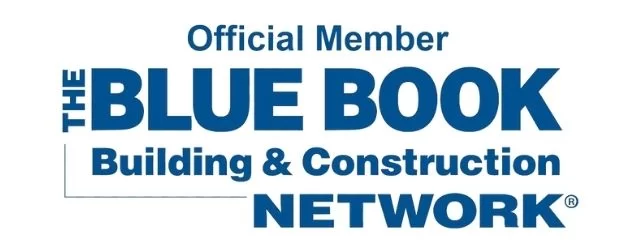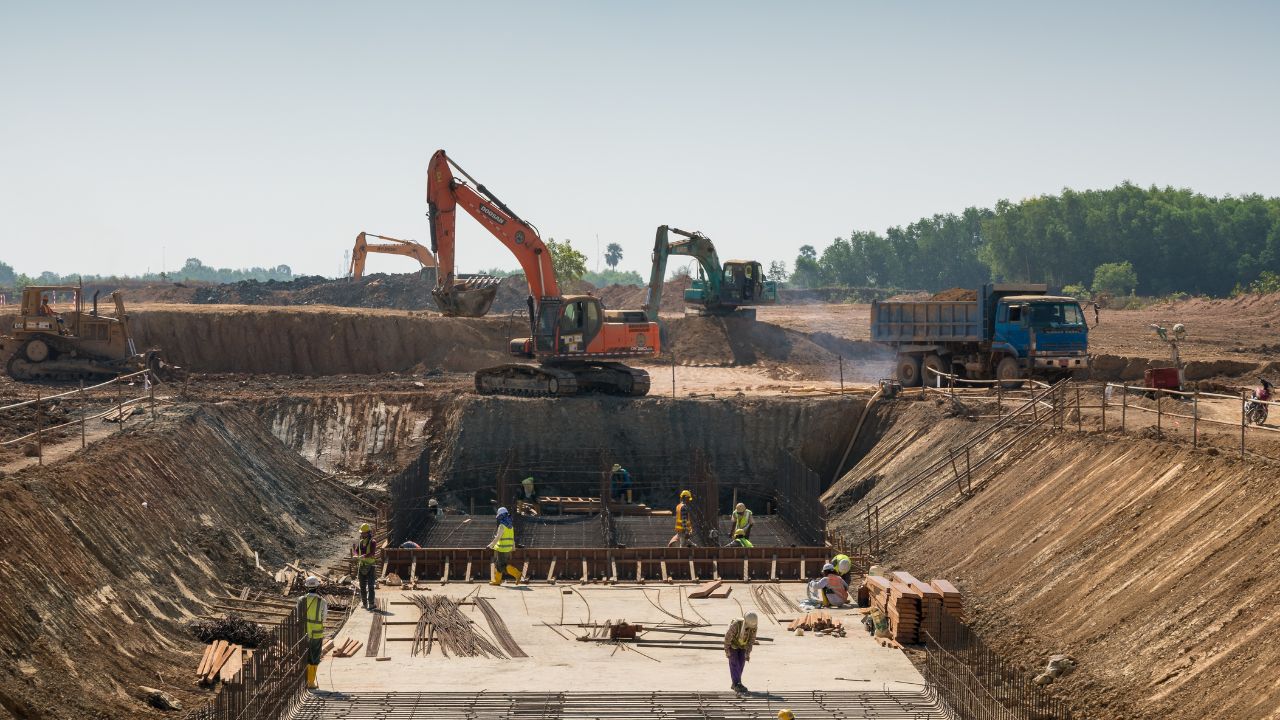- Homepage
- Why Do Banks Need Construction Estimates?
Why Do Banks Need Construction Estimates?
Leading provider of bank loan services.
Construction projects, whether residential, commercial, or multi-story developments, are significant financial undertakings that require careful planning and precise budgeting. Banks play a crucial role in providing the necessary funding for these projects, ensuring that borrowers can complete construction on time and within budget. However, before approving any loan or financial assistance, banks need a clear understanding of the project’s financial requirements, potential risks, and feasibility.
This is where a Construction Estimate For Bank Loan becomes indispensable. A construction estimate serves as a detailed roadmap of costs, including materials, labor, permits, and contingencies.

By providing an accurate projection of expenses, these estimates help banks make informed decisions, reduce the likelihood of financial loss, and maintain confidence in the borrower’s ability to manage the project successfully. Without reliable construction estimates, banks would face significant uncertainty, making it difficult to determine loan amounts, repayment plans, or even whether to approve funding in the first place.
1. Ensuring Accurate Loan Approval
One of the primary reasons banks require construction estimates is to ensure that the loan amount they provide aligns precisely with the actual financial needs of the project. Construction projects involve numerous cost components—materials, labor, equipment, permits, and unexpected contingencies—that can fluctuate significantly depending on project size, location, and complexity. Without a comprehensive construction estimate, banks run the risk of either underfunding or overfunding the project. Underfunding could lead to delays, incomplete construction, or even project failure, while overfunding can result in misallocation of capital, tying up bank resources unnecessarily. A detailed construction estimate provides a clear picture of each cost element, enabling banks to structure loans accurately and avoid financial discrepancies. Moreover, these estimates allow banks to verify whether the borrower’s requested loan aligns with the actual market costs, creating a transparent and accountable lending process. In essence, construction estimates act as a financial blueprint that guides banks in approving loans responsibly, ensuring both the lender and borrower are protected throughout the construction journey.
2. Minimizing Financial Risks for Banks
Banks face inherent financial risks whenever they provide funding for construction projects. These risks stem from cost overruns, project delays, market fluctuations, and potential borrower defaults. A well-prepared construction estimate acts as a risk mitigation tool by offering banks a clear understanding of the expected project costs and potential pitfalls. With a detailed breakdown of labor, materials, permits, and contingency allocations, banks can anticipate areas where costs may rise and adjust their lending strategy accordingly. For example, if a construction estimate identifies a high-cost component, such as specialized materials or advanced labor requirements, the bank can plan for additional oversight or phased disbursements to control spending. Without accurate estimates, banks may unknowingly expose themselves to financial losses, which could occur if the project exceeds its budget or encounters unforeseen complications. In this way, construction estimates are not merely numbers on paper—they serve as a protective mechanism, allowing banks to make informed, cautious decisions that safeguard their investment while promoting successful project completion.
Get High-Quality 3D Rendering Services Today!
Transform your space with stunning 3D Rendering that blends style, comfort, and functionality.
We Specialize in Both Residential and Commercial 3D Rendering Projects.
- Luxury Villas
- Apartment Complexes
- Modular Kitchens
- Bathrooms
- Office Buildings
- Shopping Malls
- Hospitals
- Hotels & Resorts
3. Assessing Project Feasibility
Construction estimates are essential tools for banks to determine the feasibility of a project before committing funds. A feasibility assessment goes beyond simply looking at the total cost—it examines whether the project can be completed on time, within budget, and with the expected quality standards. Detailed construction estimates break down costs for materials, labor, permits, design, and contingencies, giving banks a clear picture of the project’s scope and complexity. For instance, estimates will show whether high-cost items like custom finishes, specialized equipment, or extensive site preparation could make the project financially unviable. Banks also use estimates to evaluate the timeline, ensuring that funding aligns with project milestones and delivery schedules. By understanding the financial and logistical feasibility upfront, banks can make informed decisions about whether to approve a loan, set conditions for funding, or suggest adjustments to the project plan. Essentially, construction estimates help banks assess whether a project is realistically achievable, reducing the likelihood of financial strain for both the lender and borrower.
4. Loan Disbursement Scheduling
Construction estimates are essential tools for banks to determine the feasibility of a project before committing funds. A feasibility assessment goes beyond simply looking at the total cost—it examines whether the project can be completed on time, within budget, and with the expected quality standards. Detailed construction estimates break down costs for materials, labor, permits, design, and contingencies, giving banks a clear picture of the project’s scope and complexity. For instance, estimates will show whether high-cost items like custom finishes, specialized equipment, or extensive site preparation could make the project financially unviable. Banks also use estimates to evaluate the timeline, ensuring that funding aligns with project milestones and delivery schedules. By understanding the financial and logistical feasibility upfront, banks can make informed decisions about whether to approve a loan, set conditions for funding, or suggest adjustments to the project plan. Essentially, construction estimates help banks assess whether a project is realistically achievable, reducing the likelihood of financial strain for both the lender and borrower.
5. Monitoring Project Progress
Construction estimates are not only important for loan approval and disbursement but also serve as a benchmark for monitoring project progress. Banks use these estimates to track whether a project is adhering to its budget and timeline, allowing them to identify potential issues early on. For instance, if material costs begin to exceed the estimated amounts or labor hours go beyond projections, banks can intervene promptly to prevent financial mismanagement or delays. This monitoring helps ensure that the borrower is accountable and that funds are being used effectively at every stage of construction. Furthermore, detailed estimates enable banks to compare actual expenses against projected costs, providing a clear picture of financial performance.

This comparison is crucial for detecting discrepancies, adjusting funding schedules, or offering guidance to the borrower to keep the project on track. Ultimately, construction estimates act as a financial and operational control tool, ensuring that both the bank and borrower stay aligned, and that the project progresses smoothly from start to finish.
6. Legal and Compliance Requirements
Banks are subject to strict regulations when providing loans for construction projects, and accurate construction estimates are essential for legal and compliance purposes. Regulatory bodies require banks to demonstrate that loans are based on realistic financial planning and sound risk assessment. Construction estimates provide documented evidence of the projected costs, funding needs, and financial viability of the project, which can be reviewed during audits or regulatory inspections. In addition, estimates help banks ensure that borrowers are compliant with local building codes, permit requirements, and safety standards, reducing the risk of legal complications. For example, a well-prepared estimate will account for permit fees, inspections, and code-compliant materials, giving the bank confidence that the project meets all necessary legal standards. By maintaining detailed construction estimates, banks protect themselves from potential legal disputes or financial liability if a project encounters unforeseen problems. In essence, construction estimates are not just financial tools—they are key documents that support legal compliance, accountability, and due diligence throughout the life of a construction loan.
7. Supporting Investor and Stakeholder Confidence
Construction estimates play a pivotal role in building confidence among investors and stakeholders who are involved in funding or overseeing a project. When banks present a detailed, itemized estimate, it demonstrates that the project has been thoroughly planned, costs have been carefully calculated, and risks have been anticipated. This transparency reassures stakeholders that the borrower has a clear understanding of the financial requirements and is capable of managing the construction process responsibly. Accurate estimates also help stakeholders evaluate the return on investment (ROI) and the potential profitability of the project, whether it’s a residential development, commercial building, or large-scale infrastructure project. Furthermore, well-prepared estimates allow banks to communicate project progress effectively, showing stakeholders that funds are being allocated appropriately and milestones are being met. Ultimately, construction estimates strengthen trust, credibility, and confidence, making it easier for banks and borrowers to maintain positive relationships with investors, boards, and other stakeholders throughout the construction journey.
90% More Chances to Win Bids with Our Estimate!
Conclusion
Construction estimates are far more than simple projections of costs—they are essential tools that guide banks in every aspect of funding and managing construction projects. From ensuring accurate loan approval and minimizing financial risks to assessing project feasibility and scheduling phased disbursements, these estimates provide banks with the clarity and confidence needed to make informed lending decisions. They also play a crucial role in monitoring project progress, maintaining legal and regulatory compliance, and strengthening investor and stakeholder trust. By relying on detailed, professional construction estimates, banks can mitigate uncertainties, prevent financial losses, and support borrowers in completing projects successfully and on time. Ultimately, construction estimates are a foundation for financial planning, risk management, and project accountability, making them indispensable for banks in the construction financing process. For borrowers and project owners, working with professional estimators ensures that banks receive accurate, comprehensive documentation, which not only helps secure funding but also facilitates smooth project execution from start to finish.
Frequently Asked Question
Banks require a Construction Estimate For Bank Loan to verify the total project cost, assess financial feasibility, and ensure the borrower is requesting an appropriate loan amount. This helps minimize risks of underfunding or overspending during the construction process.
A professional construction estimate for bank loan includes a complete cost breakdown for materials, labor, permits, design, site work, and contingencies. It gives banks a transparent view of the project’s financial scope and ensures the loan aligns with real market costs.
Accurate estimates allow banks to identify potential cost overruns, delays, and material price fluctuations before funding. With a detailed construction estimate, banks can plan phased disbursements, ensuring money is released only as work progresses—protecting both lender and borrower.
Yes. A bank-ready construction estimate plays a major role in loan approval. Banks use these estimates to confirm the borrower’s budget accuracy, evaluate project feasibility, and ensure that the requested funds match actual project requirements.
Absolutely. A precise Construction Estimate For Bank Loan gives lenders confidence in your project’s financial clarity. It reduces back-and-forth documentation requests and helps expedite the approval process, leading to faster funding.
Get 5 New Projects in the Next 7 Days With Our System
Comprehensive Trade-Specific Estimates
At Estimate Florida Consulting, we offer detailed cost estimates across all major trades, ensuring no part of your project is overlooked. From the foundation to the finishing touches, our trade-specific estimates provide you with a complete and accurate breakdown of costs for any type of construction project.
Our Simple Process to Get Your Estimate
Upload Plans
Submit your project plans, blueprints, or relevant documents through our online form or via email.
Receive Quotation
We’ll review your project details and send you a quote based on your scope and requirements.
Confirmation
Confirm the details and finalize any adjustments to ensure the estimate meets your project needs.
Get Estimate
Receive your detailed, trade-specific estimate within 1-2 business days, ready for your project execution.



Our Clients & Partners
We pride ourselves on building strong, lasting relationships with our clients and partners across the construction industry.











What Our Clients Say?
We take pride in delivering accurate, timely, and reliable estimates that help contractors and builders win more projects. Our clients consistently praise our attention to detail, fast turnaround times, and the positive impact our estimates have on their businesses.
Estimate Florida Consulting has helped us win more bids with their fast and accurate estimates. We trust them for every project!
















